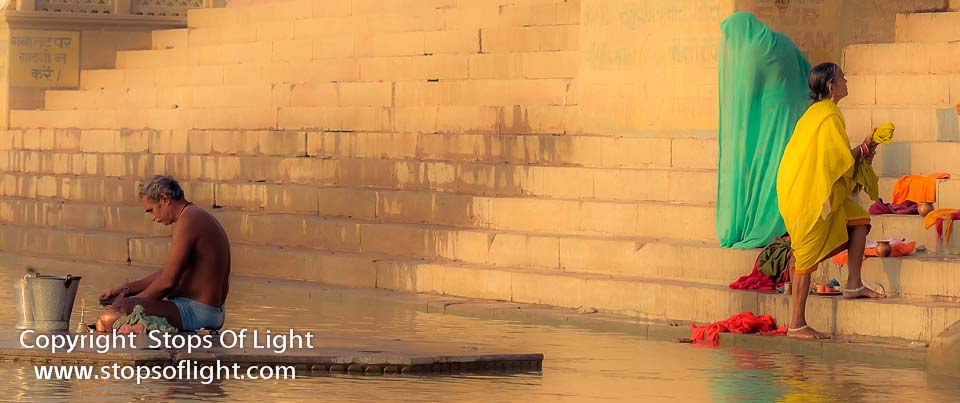[et_pb_section fullwidth=”on” specialty=”off”][et_pb_fullwidth_post_title admin_label=”Fullwidth Post Title” title=”on” meta=”on” author=”on” date=”on” categories=”on” comments=”off” featured_image=”on” featured_placement=”above” parallax_effect=”on” parallax_method=”on” text_orientation=”center” text_color=”dark” text_background=”on” text_bg_color=”#d6a34b” module_bg_color=”rgba(255,255,255,0)” title_all_caps=”off” use_border_color=”off” border_color=”#ffffff” border_style=”solid”] [/et_pb_fullwidth_post_title][/et_pb_section][et_pb_section][et_pb_row][et_pb_column type=”4_4″][et_pb_text admin_label=”Text” background_layout=”light” text_orientation=”left” use_border_color=”off” border_color=”#ffffff” border_style=”solid”]
The Making of “Kashi – The City Of Light #1”
“You don’t make a photograph just with a camera. You bring to the act of photography all the pictures you have seen, the books you have read, the music you have heard, the people you have loved.” ~ Ansel Adams
On the banks of the river Ganges in the state of Uttar Pradesh in India stands the spiritual capital of India. Its many names include “the city of temples”, “the holy city of India”, “the religious capital of India”, “the city of lights”, “the city of learning”, “the oldest living city on earth”. It is more commonly known as “Varanasi” and also “Benares”. But the only name that really does justice to it is the original name mentioned in the scriptures: Kashi – The City of Light.
Kashi is said to have been founded by the Great God Shiva, who is said to be eternally present here along with his consort Parvati. Kashi is home to over 23000 temples and is one of the most important places of pilgrimage for practitioners of the Hindu faith who flock here to perform their rituals and bathe in the holy river Ganges. Life in Kashi hence rotates around its temples and the bathing ghats (flight of steps) that lead to the holy river.
In the making of this photograph, I was primarily driven by a couple of factors. Driven as I am by my quest for Light, Color and Contrast, it was natural that I was drawn to what I saw unfolding before me. The intensity of the colors, the glow of light off the steps in the background, the contrast and juxtaposition of the players in the scene all screamed out to be photographed. And therein lies a story…
Central to hindu philosophy are the terms Purusha and Prakriti. Purusha is the self (spirit/soul), Prakriti is matter/energy. They are quite similar to the concepts of Yin and Yang in Taoist thought, seemingly opposite forces which are actually complementary parts of the same unified whole.
Shiva – The Lord of Kashi – is Purusha personified. As the supreme renunciant, he is not given to action. He does not participate in the going-ons of the world. He merely sits and observes. His wife Parvati on the other hand is the very energy that drives everything to action; she is Nature, she is Movement. She is Prakriti personified.
Stillness and Movement. Male and Female. Yang and Yin. Purusha & Prakriti. Seeming opposites, but in reality the material world cannot exist without the play of both. Just as it is contrast that makes an image, so is it that this play of seeming opposites makes the world and Life so interesting.
The Photograph
This image. I must say, is one of my favourites. Gorgeous colours, light to die for, brilliant composition, perfect moment, outstanding post-processing. This photograph does not look like a photograph at all. Rather, it comes across as a painting.
This photograph is all about contrast. Contrast of colors, contrast of subjects, contrast of movement and stillness, contrast of genders. It is perhaps apt that for the first time I truly viscerally felt how the play of opposites is vital to the balance of an image as it is to life; how apt that it should occur at a location that is the very soul of India’s hindu faith!
In post-processing I gave this image an impressionist feel, the better to convey the City of Light aspect of Kashi.
The Fine Art Print
This photograph is available in two formats: (a) as a ready-to-hang mounted canvas print, and (b) a framed image printed on either canvas or Fine Art Paper. Owing to the nature and post-processing used, I personally recommend option (a).
The print is available in two style sizes: Panoramic Collector (20″×8.35″), and Panoramic Gallery (32″×13.4″). Sizes are in U.S. inches and are approximate. Please view the Pricing Guide – Images in Panoramic Format below for pricing details.
All materials used in the printing and framing process are acid free, making the print especially resistant to aging. Prints are produced using the highest quality papers / canvases using the best inks possible.
[/et_pb_text][/et_pb_column][/et_pb_row][/et_pb_section]
